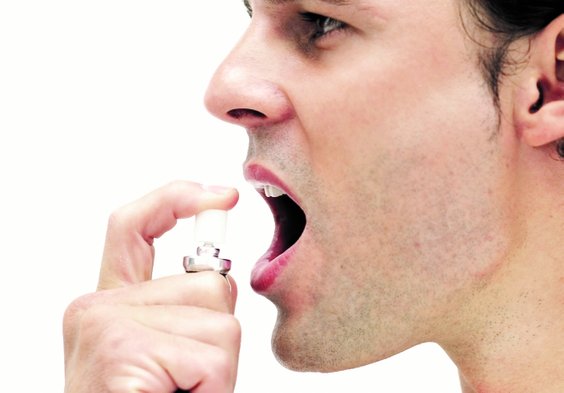(单词翻译:单击)
听力文本
This is Scientific American — 60-Second Science. I'm Karen Hopkin.
Need a quick breath check before your big meeting...or your big date? Well, scientists from South Korea may be able to help. They've engineered a portable device that detects even the tiniest trace of hydrogen sulfide...the stuff that smells like rotten eggs that is one of the primary offenders in oral obnoxiousness. Their work appears in the journal Analytical Chemistry.
Bad breath, a.k.a. halitosis, can be more than a social inconvenience. A skunky mouth also may point to some serious underlying medical or dental issues.
"Early diagnosis is very significant to prolong your healthy life."
Jun-Hwe Cha of the Korea Advanced Institute of Science and Technology. He says that most of the instruments used for diagnostics are found in clinics or hospitals...which may be tough to get to. And the electronic sensors that are currently used to sniff out various gases require a power source and precise calibration...not easy when you're out and about.

"So, we came up with a strategy to develop colorimetric gas sensors, which change its color when detecting biomarker gases."
Think of it as a litmus test for your exhalation.
To build their sensor, the researchers took lead acetate...a chemical used in some hair dye products that turns brown when exposed to hydrogen sulfide. And they embedded it in a three-dimensional nanofiber web...so the dye would spread out across a large surface area. That distribution gives the sensor the sensitivity it needs to detect trace amounts of H2S.
To test the device, the researchers puffed it with different concentrations of hydrogen sulfide gas. And they found that as little as 400 parts per billion of H2S produced a color change that could be seen by the naked eye. Which is about a fifth as much H2S as you'd need to have stank breath.
They even used the device with real human outgassing. The researchers had volunteers blow into a bag. And they spiked these exhalates with 1,000 parts per billion H2S. Again, the bad-breathylizer worked like a charm.
"This sensor showed high potential for simple halitosis diagnosis with your breath anytime anywhere in a very short time."
The team is now working on similar diagnostic sensors for other vaporous effluvium. It may not sound pretty. But, hey, it's a gas.
Thanks for listening for Scientific American — 60-Second Science. I'm Karen Hopkin.
参考译文
这里是科学美国人——60秒科学。我是凯伦·霍普金。
有一分钟时间吗?
在重要会议或重要约会之前,你需要快速检查一下口腔味道吧?那韩国的几位科学家可能会帮到你。他们设计了一种便携式设备,这个设备甚至可以检测到最微量的硫化氢,这种有臭鸡蛋味道的物质是口腔异味的主要来源之一。他们的研究结果发表在《分析化学》期刊上。
口腔异味即口臭,可能不仅仅是社交不便那么简单。有异味的口腔也可能表明存在严重的潜在内科或牙科问题。
“早期诊断对延长健康生活非常重要。”
韩国先进科技学院的Jun-Hwe Cha说到。他表示,大多数用来诊断的仪器都在诊所或医院,让人们跑这些地方可能很辛苦。而目前用于嗅探各种气体的电子传感器需要电源和精确的校准,这在外出时不易实现。
“所以,我们想出了一种策略,研发比色法气体传感器,当检测到生物标志气体时,传感器就会改变颜色。”
把它想成检测呼气的石蕊测试。
研究人员采用醋酸铅制造传感器,醋酸铅是一些染发产品使用的化学物质,它接触硫化氢时会变成棕色。他们将醋酸铅嵌入三维纳米纤维网中,这样一来染料就会扩散至大表面上。这种分布方式让传感器拥有了检测微量硫化氢所需的灵敏度。
为了测试这个设备,研究人员使用了不同浓度的硫化氢气体。他们发现,十亿分之四百这样低浓度的硫化氢就能产生肉眼可见的颜色变化。而五倍这种浓度的硫化氢才会产生口臭。
他们甚至用设备测试了真人口气。研究人员让志愿者向袋子里吹气。他们在袋子里呼出的气中加入了十亿分之一千浓度的硫化氢。这个口气检测仪再次发挥了其魔力。
“这种传感器可以随时随地在极短的时间内对你的呼吸进行简单的口臭诊断。”
该团队现在正在研发检测其他臭气的类似诊断传感器。这听起来可能不太吸引人。但是,嘿,这可是令人高兴的事情。
谢谢大家收听科学美国人——60秒科学。我是凯伦·霍普金。
译文为可可英语翻译,未经授权请勿转载!
重点讲解
重点讲解:
1. point to 显示;表明;
High interest rates do not point to a buoyant market this year.
今年的高利率并不表明市场繁荣。
2. sniff out 发现;找到;
An 'electronic nose' has been developed that can sniff out cancer in patients' breath.
科学家发明了一种“电子鼻”,可以从患者的呼吸中嗅出癌症。
3. out and about 四处走动,外出活动;
They often saw me out and about.
他们经常看见我四处奔波。
4. come up with 想出,提出(计划、想法等);
You would take things as they came. All you had to do was think a little harder and come up with a new solution.
既来之,则安之,你必须多动脑子,想出个新的解决方法来。


